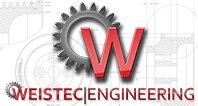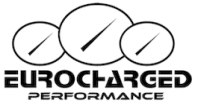Results 1 to 7 of 7
-
05-29-2013, 04:52 PM #1
 Member
Member








- Join Date
- Feb 2011
- Posts
- 1,658
- Rep Points
- 2,144.2
- Mentioned
- 12 Post(s)
- Rep Power
- 22
It's hard to explain sometimes - especially when dynos are factored in...
A dyno should read the same - given proper calibration - for a given car in any gear. Yes, a car in 1st gear will rotate the drum to a small amount of speed in a short amount of time; a car in 6th gear will accelerate/rotate that same drum to a large amount of speed in a large amount of time... These two speed/time values are exactly the same when divided. The only reason that I have read to use as close to a 1:1 ratio when dynoing your car is because there is less parasitc loss in the higher gears than lower. In other words, 1st gear saps more power than 6th due to the fact that the engine has to spin these gears much faster in 1st than in 6th. This means more heat, more friction, etc...
One thing that a dyno WILL NEVER SHOW is how gearing will affect the actual accelerative force of a car. That's not the point of a dyno - the point of a dyno is to measure the engine's average power output - that's it.
To keep things simple, think of the equation for HP: HP = TQ * RPM / 5252 (speaking imperial here)... Torque and RPM are EXACTLY EQUAL in contribution to power. If you have 1 extra lb-ft of torque than I do, but I have the capability to spin my motor 1 RPM more than you - we have the same exact power capability.
Now take gearing into consideration. We all know your car accelerates harder in a lower gear than a taller gear. This is something everyone can agree on - and surely has "felt" 1st gear pulling harder than 6th while driving any car. Take the simple example of two cars both making 300 ft-lb of torque from 0 RPM all the way to 5000 RPM (redline). Both cars have the same gears. One car gets a "tune"
- we'll just say a lightened valve train to keep this simple. This newly tuned car has a redline of 6000 RPM - and still can create the same amount of torque at this new RPM. Without changing gears, we can see that the horsepower for the tuned car went up ((6000 RPM instead of 5000 RPM) * TQ/5252). Power for this car went up exactly 20% - torque at the crank is still the same.
Without any gear changes, we see that the tuned car is already faster than the untuned. Now say - we want the road speed of the newly tuned car to match the road speed of the "stock" car in every gear at redline. In other words, we want both cars to achieve the exact same MPH at redline for every gear. We see that something has to change - since the tuned car now can spin 1000 more RPMs than the other. We need to "gear down" the tuned car. Specifically - we need to gear it down 20% (6000 RPM - 5000 RPM / 5000 RPM) [newValue - oldValue / oldValue = percentage changed]... Because the gearing is now 20% lower than the other/stock car, yet the car still reaches the exact same speed in each gear - and torque output is unchanged, the car "requires" 20% less force from the engine throughout the entire RPM range in every single gear to reach the same speed (any speed ) as the untuned car. In other words - we just increased the amount of torque to the ground by 20% by adding 1000 RPMs and changing the gearing to take advantage of the RPMs. We now have the ability to accelerate 20% harder without any more torque at the crank. Note now, that we would see 20% more power on the dyno for the tuned car, and the same amount of torque in both cars.
Now let's change the gearing again on the tuned car. Torque and power remain the same on a dyno (we did nothing to increase power this time) - we are now only changing gearing to take advantage (mechanical advantage) of our new redline. Lets say we want to reach 40 as opposed to 50 MPH in the tuned car. This is a decrease in speed of 20% in each gear (differential change). The same exact logic/math/physics as the paragraph above still applies. By reducing the road speed in each gear, something must change. We are "freeing" up 20% more torque at the ground in favor of a 20% lower speed in every gear at redline. Nothing changes on the dyno - the dyno still reads the same; you are instead accelerating a mass (the drum) 20% "harder" in exchange for 20% less speed at redline; in other words drum will accelerate exactly 20% more quickly than the untuned car in the same gear, however it's ending speed at redline will be 20% slower (you exchanged one thing for another).
We can see why additional RPMs are equally if not more important - especially when gearing is factored in. This is the reason that the M3 has a high redline; this is by design. The same applies for F1 - they have small displacement NA engines creating moderate TQ at the crank, yet spin the heck out of it. They spin the heck out of it to take advantage of gearing (torque at the pavement).
This article explains it VERY well - and is much shorter than what I wrote: Excellent Article explaining this perfectly - see slide 6,7,9 and 10.
Average horsepower is all that matters. Torque at the crank means nothing unless it's at a high RPM (creating high amounts of horsepower). With a higher RPM, you can use mechanical advantage to your advantage - to accelerate a mass more quickly to a slower end speed in a given gear. That's it in a nutshell... It's really simple - however, when dynos are thrown in (along with some operators who can skew results for their benefit - another discussion) - it's extremely hard if not impossible to understand the characteristics of two cars with two different engines by looking at a power curve without taking into consideration anything else - specifically torque at high RPMs and gearing.
In general, it is favorable in racing to have a high redline yet good breathing (to make torque at that high redline) engine so you can take advantage of gearing. You can have less or more torque (in trade off for top speed) on different circuits by altering your gear sets. The more RPM range you have (while still being able to make torque at the crank) - the more flexible an engine is for a race car (or any car), as you can tailor gearing to suit a specific situation. Just as you choose the amount of torque to the ground everyday while driving by choosing a lower or higher gear/shifting gears. With DCT - the RPM/redline/gearing advantage increases dramatically, as shift counts increase with lower gearing. During a shift you are not accelerating - if you have a standard transmission with 100 gears to "take advantage" of a low RPM redline and low crank TQ engine, you are essentially losing time all over the place. This is a key, RPMs are needed both for the component in the formula for HP (TQ X RPM / 5252) and needed to take advantage of a lower gear to produce more torque/force at the ground (acceleration).
Hope that helps.
This is another good read, however it's in a forum. The guy is an expert in the area of dynamometers (Mustang dyno engineer) http://forums.nasioc.com/forums/show...1478091&page=2
If there is anything you read - read the PDF in the first link - it explains it professionally and accurately.
Cheers.
-
05-29-2013, 04:56 PM #2
-
05-29-2013, 04:59 PM #3
Your post was so good I figured it deserved its own thread @inlineS54B32 especially with the number of N54 guys that seem to misunderstand the topic.
BRAND NEW IN BOX 991.2 standard/non-pse SPW cat bypass pipe for sale - $899 shipped
New generic 991.2 PSE bypass pipes - $499 shipped
-
05-29-2013, 05:14 PM #4
 Supporting Vendor
Supporting Vendor










- Join Date
- Jan 2012
- Posts
- 996
- Rep Points
- 2,260.0
- Mentioned
- 69 Post(s)
- Rep Power
- 23
Very true. Everyone runs the s65 in 5th gear but our dyno doesn't always allow speeds that high so we run in 4th and notice around 15 whp less.
You can always tell what gear they ran in based on the mph if you have the dyno data (dyno jet).
-
05-29-2013, 05:18 PM #5BRAND NEW IN BOX 991.2 standard/non-pse SPW cat bypass pipe for sale - $899 shipped
New generic 991.2 PSE bypass pipes - $499 shipped
-
05-29-2013, 05:44 PM #6
 Member
Member








- Join Date
- Feb 2011
- Posts
- 1,658
- Rep Points
- 2,144.2
- Mentioned
- 12 Post(s)
- Rep Power
- 22
-
05-29-2013, 05:49 PM #7




 Quote
Quote














Hey feabs: ...
feabs is now here!